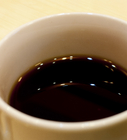How to Avoid Getting PMS
Edited by Carolyn Barratt
Premenstrual syndrome (PMS) is a term given to symptoms associated with the menstrual cycle. PMS symptoms typically occur within two weeks before the onset of menstruation, and often subside when menstruation begins. PMS symptoms vary for each individual and may also vary from month to month. Physical symptoms often include bloating, weight gain, tender breasts, joint or muscle pain, headaches, backaches, acne and tiredness. PMS can also cause trouble sleeping, inability to concentrate, tension, irritability, anxiety and depression.
Steps
-
1Exercise moderately for 30 minutes each day to reduce PMS symptoms. You should also engage in 1 to 3 hours of aerobic and muscle strengthening exercises weekly.Ad
-
2Adjust your diet for at least the two weeks leading up to your menstrual cycle. Although it is recommended that women make dietary changes all month long for at least four consecutive months, studies also indicate that changing your diet in the short term may be enough to ease PMS symptoms, especially if your symptoms are not too severe.
- Eat a healthy, well-balanced diet that includes a lot of vegetables and whole grains.
- Eat several smaller meals or healthy snacks every two to three hours instead of three large meals.
- Avoid eating sugar, honey, corn syrup, artificial sweeteners and white flour. Limit fruit, and fruit juices, to one or two servings a day.
- Cut back on, or eliminate, caffeine, alcohol and nicotine.
-
3Supplement your diet with vitamins and minerals known to ease PMS symptoms. These include folic acid, calcium with vitamin D, magnesium, vitamin B-6 and vitamin E. Some women find it helpful to take herbal supplements like black cohosh and evening primrose oil.
-
4Reduce the amount of stress in your life. Practice relaxation techniques like meditation, yoga and massage to lower your stress levels. Join a support group or talk to your family doctor if you are unable to manage your stress levels.
-
5Take over-the-counter pain relievers, such as ibuprofen, naproxen and aspirin to help with physical symptoms. Follow package dosage instructions.
-
6Apply a hot water bottle or heating pad to your abdomen or lower back.
-
7See your family doctor if your PMS symptoms are severe. There are several prescription medications, including hormonal birth control, that doctors can prescribe to help with symptoms.
-
8Get eight hours of sleep a night. A well-rested body is better able to cope with the changes brought on by your menstrual cycle.Ad
Tips
- If your PMS symptoms include tiredness and paleness, have your doctor check the iron levels in your blood. Menstruating women have an increased risk of anemia.
Warnings
- Women who suffer from other conditions such as asthma, hemorrhoids, recurring infections, seizures and urinary problems may find that PMS worsens their symptoms.
Article Info
Categories: Women’s Health
In other languages:
Español: Cómo evitar tener Síndrome Premenstrual, Deutsch: Wie man PMS vorbeugt
Thanks to all authors for creating a page that has been read 3,589 times.


















